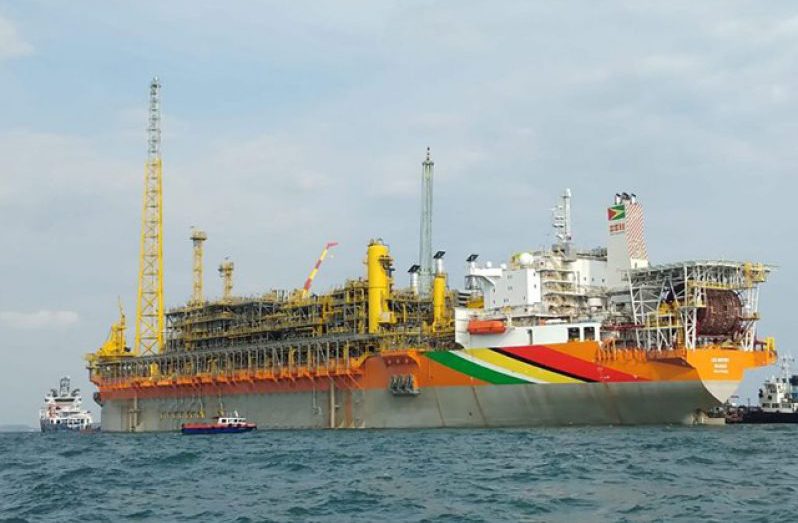–Westmount Energy predicts
THE year 2021 is shaping up to be significant for exploration and appraisal operations in the Guyana-Suriname basin, with more than 12 exploration and appraisal wells scheduled for Guyana alone, Westmount Energy has said. Westmount Energy, a holding company for a group of subsidiaries, which operate in the oil and gas-related industries, owns an indirect interest in the Canje block via a 7.7 per cent shareholding in JHI Associates, which in turn, owns a 17.5 per cent stake in the exploration project.
The company’s current investment portfolio is now focussed on the ongoing ExxonMobil-operated drilling campaign at the Canje Block, with the drilling outcome of two additional large independent prospects, Jabillo-1 and Sapote-1, due to be revealed soon.
Its portfolio also includes exposure to other opportunities offshore Guyana, including the Bulletwood-1 well, which is confirmed to have hydrocarbons but not in commercial volumes. Data from the Bulletwood-1 well is still being analysed.
“Drilling activity in the Guyana-Suriname basin continues to accelerate, driven by the industry’s focus on ‘advantaged barrels as a result of the unique combination of prospect sizes, reservoir quality, low carbon intensity and low breakeven metrics (US$25 to US$35 per barrel), available offshore Guyana,” Westmount reasoned.
The investment company believes that any commercial discovery in one of the “Canje wells” could result in transformational value changes for them.
It is on this basis that Westmount made its positive prediction for 2021, which follows a report from Norwegian independent energy research and business intelligence firm, Rystad Energy. Rystad Energy had stated that 2021 holds “a lot of promise” for Guyana’s burgeoning petroleum sector.
According to Rystad Energy, ExxonMobil, in addition to the Canje Block, will be “firming up” resources in the southeastern part of the Stabroek Block, where deeper plays have been observed underneath the existing discoveries.
The Stabroek Block is 6.6 million acres (26,800 square kilometers), with current discovered recoverable resources estimated at more than nine billion oil-equivalent barrels. The 19 discoveries on the block to date have established the potential for at least ten floating production, storage and offloading (FPSO) vessels producing more than 750,000 barrels of oil per day by 2027.
ExxonMobil’s first offshore Guyana project, Liza Phase One, began producing in late 2019, well ahead of the industry’s average for development time. Liza Phase Two remains on track to begin producing oil by early 2022. Liza Phase Two will produce up to 220,000 barrels of oil per day at peak rates, using the Liza Unity FPSO. Late last year, the oil giant, following an agreement with the Government of Guyana, decided to proceed with the Payara field development offshore Guyana.
Payara is ExxonMobil’s third project in the Stabroek Block, and is expected to produce up to 220,000 barrels of oil per day, after start-up in 2024, using the FPSO vessel. The US$9 billion development will target an estimated resource base of about 600 million oil-equivalent barrels.
“Rystad Energy data suggests that close to 300 million barrels of oil equivalent have been discovered on average for each exploration well (wildcat and appraisal) drilled in the country over the past six years,” Analyst attached to Rystad Energy’s upstream team, Santosh Kumar, said in a recent report.
BLUE-CHIP INTEREST
According to Westmount Energy, Guyana, with its positive prospects and vast potential, remains one of the few areas of “blue-chip” interest in high-impact exploration. Investopedia defines blue-chip stocks as secure investments because they pay out dividends as well as consistently and steadily grow over time.
It was reported recently that Guyana’s role in the global petroleum industry could be bigger than it appears on the surface, as an analysis done by global energy research and consultancy group, Wood Mackenzie, shows that the country is among five nations which will produce most of the remaining deep-water oil resources.
“We found that 80 per cent of the remaining deep-water oil resources will come from five countries (Brazil, the U.S., the Gulf of Mexico, Guyana, Nigeria, and Angola). Therefore, understanding the quality of their reservoirs is key to identifying who has the best oil,” Vice-President of Subsurface Research for Wood Mackenzie, Dr Andrew Latham, is quoted as saying in a report from Wood Mackenzie. Guyana attracted international attention after ExxonMobil made the first commercial discovery of oil offshore Guyana in 2015 and started production in December 2019. ExxonMobil, on Tuesday, announced its 19th discovery offshore Guyana at the Uaru-2 well.



.jpg)








